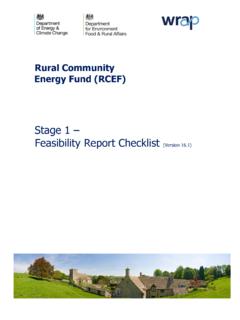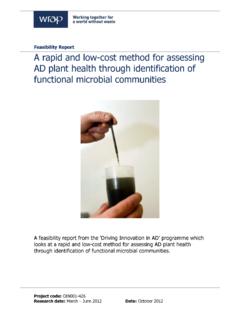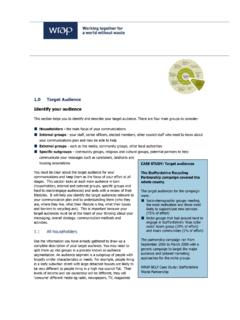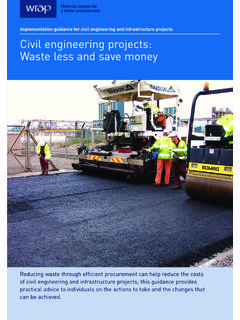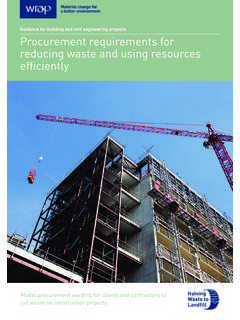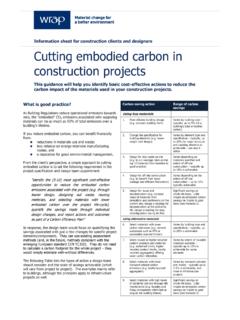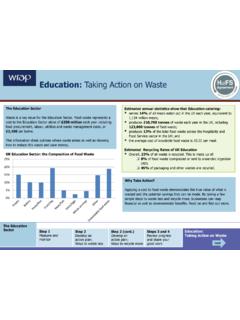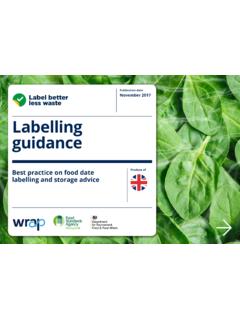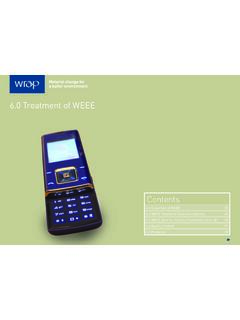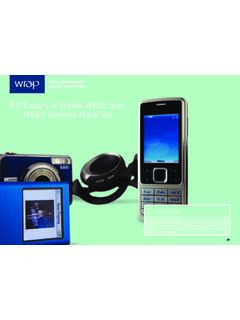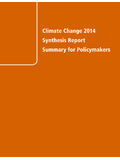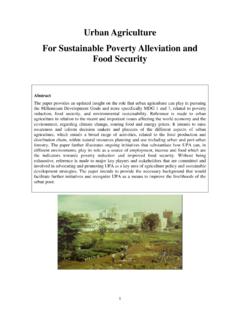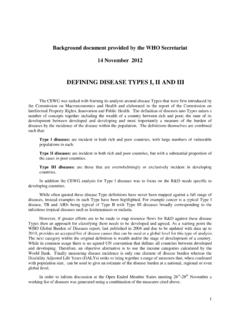Transcription of Final report: Reusable Packaging - Factors to …
1 Final report : Reusable Packaging - Factors to Consider single trip or Reusable Packaging - considering the Right Choice for the Environment This report describes the Factors which need to be considered when reviewing the environmental performance of single - trip and Reusable Packaging systems. It is the result of a review of the findings of Life Cycle Assessments and similar studies comparing the environmental burden of single - trip and Reusable Packaging systems. Project code: RHI007-001 ISBN: 1-84405-437-3 Research date: March-March 2010 Date: 1 May 2010 WRAP s vision is a world without waste, where resources are used sustainably.
2 We work with businesses and individuals to help them reap the benefits of reducing waste, develop sustainable products and use resources in an efficient way. Find out more at Document reference: WRAP, 2009, RHI007. Prepared by Innventia Edge. Written by: Greg Wood and Michael Sturges of Edge, member of the Innventia Group of companies Front cover photography: Reusable transit Packaging example WRAP and Innventia Edge believe the content of this report to be correct as at the date of writing. However, Factors such as prices, levels of recycled content and regulatory requirements are subject to change and users of the report should check with their suppliers to confirm the current situation.
3 In addition, care should be taken in using any of the cost information provided as it is based upon numerous project-specific assumptions (such as scale, location, tender context, etc.). The report does not claim to be exhaustive, nor does it claim to cover all relevant products and specifications available on the market. While steps have been taken to ensure accuracy, WRAP cannot accept responsibility or be held liable to any person for any loss or damage arising out of or in connection with this information being inaccurate, incomplete or misleading.
4 It is the responsibility of the potential user of a material or product to consult with the supplier or manufacturer and ascertain whether a particular product will satisfy their specific requirements. The listing or featuring of a particular product or company does not constitute an endorsement by WRAP and WRAP cannot guarantee the performance of individual products or materials. This material is copyrighted. It may be reproduced free of charge subject to the material being accurate and not used in a misleading context. The source of the material must be identified and the copyright status acknowledged.
5 This material must not be used to endorse or used to suggest WRAP s endorsement of a commercial product or service. For more detail, please refer to WRAP s Terms & Conditions on its web site: single trip or Reusable Packaging - considering the Right Choice for the Environment 1 Executive Summary Introduction Packaging - whether single - trip or Reusable - plays a crucial function protecting goods, preventing damage during transport and storage from the elements, vibration, drop and compression. It also provides the opportunity to communicate information to a customer regarding the product s contents whether promotional, factual or mandated by law, as well as providing product security making items more tamper-resistant.
6 Packaging is only one element of a product s overall environmental impact and often only represents 10% of the overall impact of the product / Packaging system. It is a highly visible use of resources accounting for about a fifth of the household waste stream and between a tenth to a twentieth of commercial and industrial waste1. It is, therefore, an issue of concern to both consumers and policy makers. These concerns are reflected in WRAP s 2008-2011 business plan, which identifies Packaging as one of four priority areas. Perceptions of can be reinforced by the single - trip nature of the majority of Packaging , especially consumer Packaging .
7 There are significant examples of Reusable Packaging systems in existence, which may offer potential environmental and/or economic benefits over single - trip solutions; however, Reusable Packaging systems are not always appropriate solutions. If conditions are not appropriate, the environmental and/or economic costs of Reusable Packaging will outweigh the benefits. As a result of this, the extent to which reuse of Packaging offers genuine environmental benefits remains a central element of the resource efficient Packaging debate. Project Objective The aim of this report is to help Packaging decision makers to consider single - trip and Reusable Packaging options on an informed basis.
8 This is achieved by identifying the key Factors from an environmental life cycle perspective that influence the environmental performance of Reusable Packaging systems. Methodology Life cycle assessment (LCA) is a technique that quantifies the environmental impacts of a product or system, typically from the cradle to the grave from the winning and conversion of raw materials, through manufacturing of products, distribution, use, and finally management of wastes2. Many LCA studies have been performed that evaluate and compare Reusable Packaging systems and equivalent single - trip Packaging solutions.
9 A structured and reasoned review of these existing studies was made in order to identify key trends. Understanding the commonalities and differences between studies and results helps WRAP and other interested parties to better understand the conditions under which Reusable Packaging may be environmentally preferable to single - trip Packaging solutions. Factors which affect relative environmental performance of single - trip and Reusable Packaging systems Examination of the LCA studies allowed those Factors which consistently had a significant influence on the results - for most impact categories - to be identified.
10 These Factors have been categorised as primary Factors . Those 1 million tonnes of household waste were collected in England in 2007/08, with Packaging accounting for around 5 million tonnes. Commercial and industrial waste is estimated around 68 million tonnes. Packaging waste arsing in the commercial and industrial waste streams is estimated at around 5 million tonnes. Sources: Department for Environment, Food and Rural Affairs (Defra) online statistics and Environment Agency, Commercial and Industrial Waste Survey, 2002/03.
